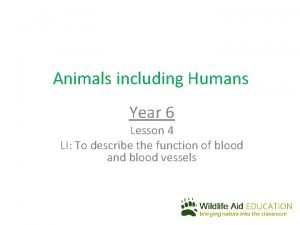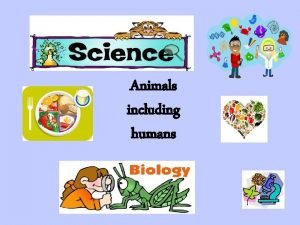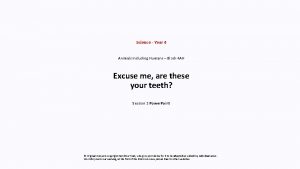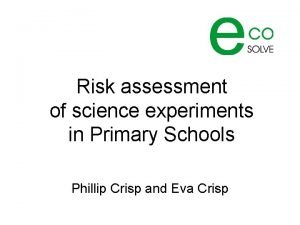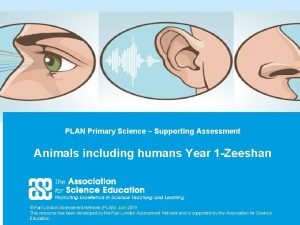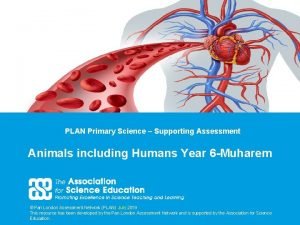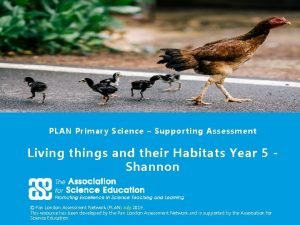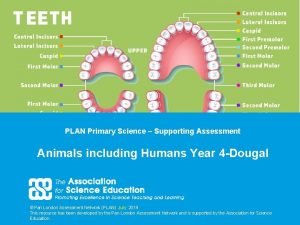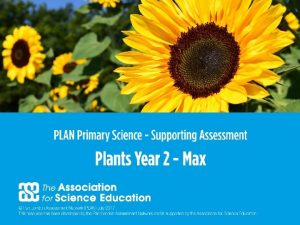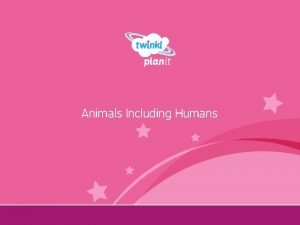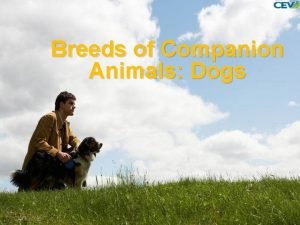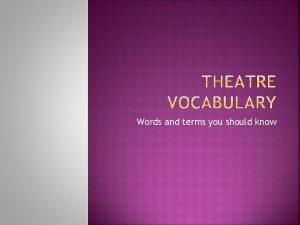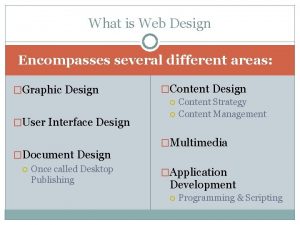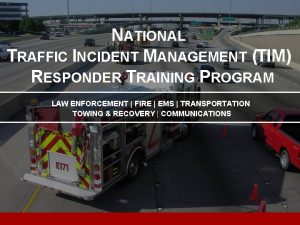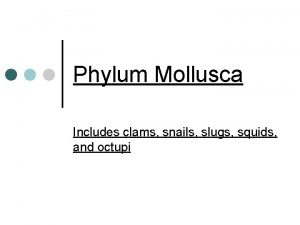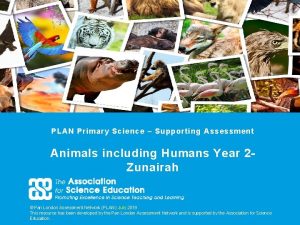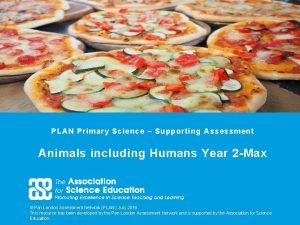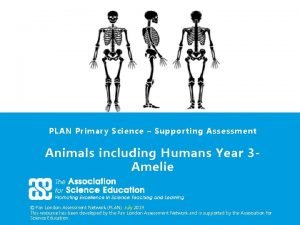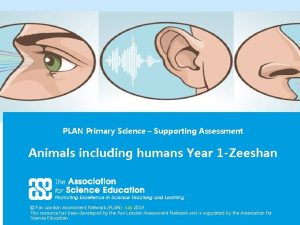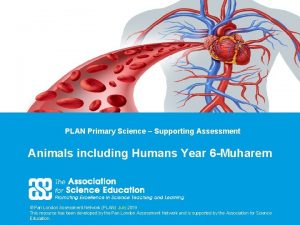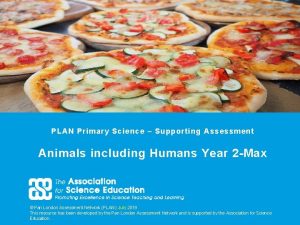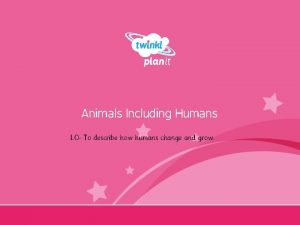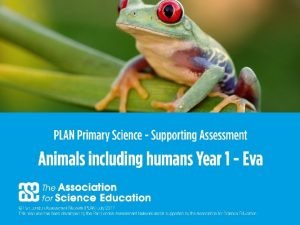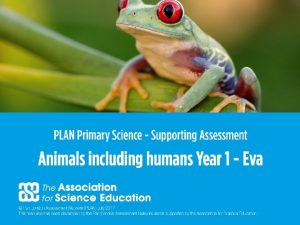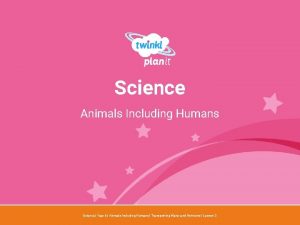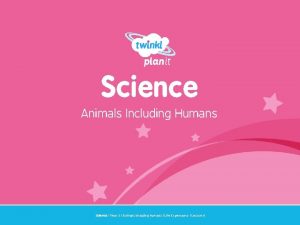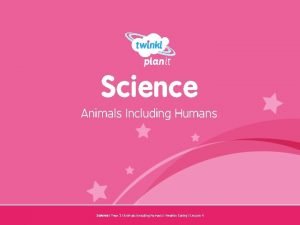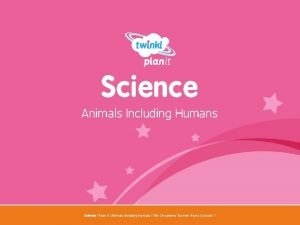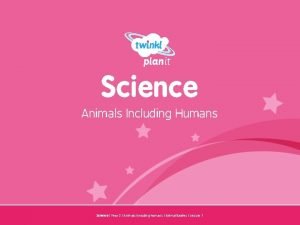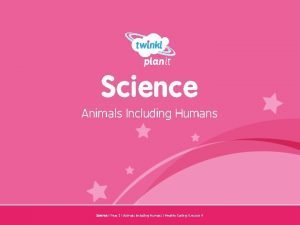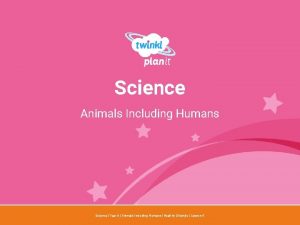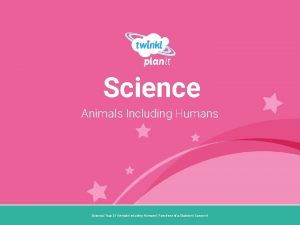PLAN Primary Science Supporting Assessment Animals including Humans
























- Slides: 24

PLAN Primary Science – Supporting Assessment Animals including Humans Year 4 -Hadia © Pan London Assessment Network (PLAN) July 2019 This resource has been developed by the Pan London Assessment Network and is supported by the Association for 1 Science Education.

PLAN Primary Science - Supporting Assessment PLAN Primary Science is a set of resources produced to enable teachers to have a clearer understanding of National Curriculum expectations for meeting the standard. Annotated collections of children’s work provide examples of what working at the expected standard for primary science might look like for the knowledge and conceptual understanding statements of the programmes of study (POS). It is not the intention of these resources to specifically exemplify the working scientifically statements. However, aspects of working scientifically have been shown as an integral part of the teaching and learning of the knowledge and concepts. The resources provided have been cross moderated multiple times before publishing so that they can be used with confidence by teachers and subject leaders. Each collection of work shows one example of how a pupil has met National Curriculum statements for a particular area of content but these are not intended to be the definitive way of teaching these statements. 2

Structure of the resources Each resource contains the relevant National Curriculum statements for the unit of work and prior learning, a planning matrix, annotated work and a summary sheet. The matrix provides an interpretation of the key learning of the National Curriculum statements, and suggestions of key vocabulary. In order to be meet the expectations pupils must firstly understand the key concept and then be provided with opportunities to apply that knowledge. This is a key planning tool. Key Learning Secure Possible Evidence Show Overview paragraph describing understanding of a curriculum concept by using scientific Key vocabulary – list of words vocabulary correctly Possible ways to demonstrate key learning, particularly correct usage of vocabulary Apply knowledge Suggestions of contexts to use. in familiar related contexts, including a range of enquiries Possible ways to demonstrate that a pupil has gone beyond recall of facts and can apply the key learning, for example using the vocabulary and basic principles to produce explanations, usually within Working Scientifically contexts. 3

Contents of the materials Please note: The NC statements for each topic area for the relevant year group are stated on the slide. Only the statements in bold on that slide have been exemplified. In these cases the teachers have chosen to split the statements within the topic area to teach at different times. The prior NC statements relevant to the topic area are also stated and use to determine pupils’ knowledge at the start of the unit. Each slide has been annotated with coloured text. Please see key below: Red Commentary to explain how evidence meets/does not meet NC statements Blue Commentary to highlight features of working scientifically Green Pupil Speak Grey Other relevant information eg. vocabulary used 4

Year 1 Statement learning Prior Learning Year– Prior 1 statements Pupils should be taught to: • identify and name a variety of common animals including fish, amphibians, reptiles, birds and mammals (1 -Animals including Humans) • identify and name a variety of common animals that are carnivores, herbivores and omnivores (1 Animals including Humans) • describe and compare the structure of a variety of common animals (fish, amphibians, reptiles, birds and mammals, including pets) (1 -Animals including Humans) 5

Year 2 Statement learning Prior Learning Year– Prior 2 statements Pupils should be taught to: • notice that animals, including humans, have offspring which grow into adults (2 -Animals including Humans) • find out about and describe the basic needs of animals, including humans, for survival (water, food and air) (2 -Animals including Humans) • describe the importance for humans of exercise, eating the right amounts of different types of food, and hygiene (2 -Animals including Humans) 6

Year 3 Statement learning Prior Learning Year– Prior 3 statements Pupils should be taught to: • identify that animals, including humans, need the right types and amount of nutrition, and that they cannot make their own food; they get nutrition from what they eat (3 -Animals including Humans) • identify that humans and some other animals have skeletons and muscles for support, protection and movement (3 -Animals including Humans) 7

Year 4 Statements Year 4 statements Pupils should be taught to: • describe the simple functions of the basic parts of the digestive system in humans • identify the different types of teeth in humans and their simple functions (4 -Animals including Humans) • construct and interpret a variety of food chains, identifying producers, predators and prey (4 -Animals including Humans) 8

Later Statements Pupils do not need to be taught content they will learn in later year groups. They can be challenged by applying the content for their year group in broader contexts. Pupils in Year 5 will be taught to: • describe the changes as humans develop from birth to old age (5 -Animals including Humans) Pupils in Year 6 will be taught to: • identify and name the main parts of the human circulatory system, and explain the functions of the heart, blood vessels and blood (6 -Animals including Humans)

Assessment guidance Shows understanding of a concept using scientific vocabulary correctly Key learning Possible evidence Food enters the body through the mouth. Digestion starts when the teeth start to break the food down. Saliva is added and the tongue rolls the food into a ball. The food is swallowed and passes down the oesophagus to the stomach. Here the food is broken down further by being churned around and other chemicals are added. The food passes into the small intestine. Here nutrients are removed from the food and leave the digestive system to be used elsewhere in the body. The rest of the food then passes into the large intestine. Here the water is removed for use elsewhere in the body. What is left is then stored in the rectum until it leaves the body through the anus when you go to the toilet. Can sequence the main parts of the digestive system Humans have three types of teeth - Incisors for cutting, Canines for tearing, Molars for grinding (chewing) Can draw the main parts of the digestive system onto a human outline Can describe what happens in each part of the digestive system Can point to the three different types of teeth in their mouth and talk about their shape and what they are used for. Key vocabulary Digestive system, digestion, mouth, teeth, saliva, oesophagus, stomach, small intestine, nutrients, large intestine, rectum, anus, teeth, incisor, canine, molar, herbivore, carnivore, omnivore Applying knowledge in familiar related contexts, including a range of enquiries Create a model of the digestive system using household objects Whilst eating different types of food, identify which teeth are being used for cutting, tearing and grinding (chewing) Classify animals according to the type of teeth they have in their skulls Can use the model to describe the journey of food through the body explaining what happens in each part. Can record the teeth in their mouth (make a dental record) Can explain how the teeth in animal skulls show they are carnivores, herbivores or omnivores.

Identifying the different types of teeth and their functions • identify the different types of teeth in humans and their simple functions Children began by eating an apple and discussing which teeth they used and why. After learning about the functions of the different teeth through internet research and counting the number they had, they made videos in pairs, using the webcam, to explain what they had learnt. In the video Hadia names the different teeth, identifies where they are in the mouth, and explains their function. She also makes links to the different types of teeth animals have showing she can apply her knowledge. “We use teeth to bite things and stop us from choking. These are our incisors (points to front teeth), now we use these to bite things and then these teeth are called the canines. These little sharp teeth (pointing) are used to tear food. Dogs, tigers and lions have them and they are bigger than ours because they are carnivores and eat meat and catch their prey. Our molars at the back of our mouth are used to chew our food so that we don’t choke when we swallow. Premolars are between our canines and molars. They are used to chew and crush food. ” 11

Investigating tooth decay • setting up simple practical enquiries, comparative and fair tests This is an enrichment activity carried out by the children that had demonstrated they were secure with the types and function of the teeth. It provides an additional opportunity for working scientifically. Children received a letter from a toothpaste company asking them to investigate tooth decay and different toothpastes to give advice about the design of a new toothpaste. The activity involved investigating what happened to teeth in acid. They used egg shell and vinegar to represent teeth and acid. 12

Investing tooth decay • making systematic and careful observations and, where appropriate, taking accurate measurements using standard units, using a range of equipment, including thermometers and data loggers This records what the pupil observed the following day. When questioned by the teacher, Hadia is beginning to identify the effect of different strengths of acid in container B and C. This becomes clearer in a follow up conversation with the teacher. “This beaker is just vinegar so it is really strong acid. This one is vinegar and water so it is not as strong and that’s why it has changed colour and gone very soft. “ Hadia has observed the changes in the egg shell and has begun to associate that with the amount of acid. 13

Investigating the effect of different drinks on teeth (contd. ) • reporting on findings from enquiries, including oral and written explanations, displays or presentations of results and conclusions This shows that Hadia understands that it is acid that causes the egg shell to decay. This knowledge is beyond that expected at KS 2. 15

Investigating toothpaste • setting up simple practical enquiries, comparative and fair tests • making systematic and careful observations and, where appropriate, taking accurate measurements using standard units, using a range of equipment, including thermometers and data loggers The children set up a number of tests to compare toothpastes. They discussed the colour and smell, tested how long it took to clean permanent pen off an enamel tile and how long it took to shake the toothpaste off the toothbrush. This is an additional enrichment activity. The group used a stopwatch to measure time and create their own table to record their results. They completed a number of comparative tests and orally compared each group’s results. 16

Testing toothpaste • reporting on findings from enquiries, including oral and written explanations, displays or presentations of results and conclusions This conclusion shows that Hadia has used the data to evaluate which test is the most important when choosing a toothpaste. 17

Reporting on their findings. • using straightforward scientific evidence to answer questions or to support their findings. This writing provides further evidence of Hadia using data to answer questions and support her ideas. This part shows that Hadia is aware of the need to brush her teeth in order to keep them healthy (reinforcement of a year 2 objective). 18

Initial assessment activity – to elicit current understanding • To describe the functions of the basic parts of the digestive system in humans The children were given a basic diagram of the digestive system and asked to annotate it to show what they knew about what happens to the food they eat. This shows that Hadia has an understanding of the function of teeth from the earlier work but very limited knowledge of the digestive system. 19

Researching the digestive system • describe the functions of the basic parts of the digestive system in humans. Through a jigsaw activity, children read information about different parts of the digestive system and shared their learning in their group. They then put their information together. Hadia’s group has named the different organs and is developing an understanding of the function of some organs. This group has little understanding of the function of the intestines at present. At this stage Hadia is not using appropriate scientific language, or showing secure understanding of the various functions. She needs more opportunities develop secure understanding 20

Making a model of the digestive system • describe the functions of the basic parts of the digestive system in humans. “The plastic bag is like our stomach and we added vinegar. It is an acid and it helps break down the food. We squeezed the bag like our stomach muscles. ” The children made a model of the stages of the digestive system. They worked in groups following instructions from the teacher. At each stage the correct vocabulary was used to describe the function. “The tights had tiny holes to let out the nutrients from the food like our small intestines”. Hadia’s comments show that she understands how the parts of the model represent the organs in the digestive system. “We were just left with the solid waste at the end”. 21

Tracing the journey through the human body • describe the functions of the basic parts of the digestive system in humans. After they had made a model of the digestive system, the children completed a storyboard, which identified the functions of the different organs in the digestive system. This gave them the chance to use the key vocabulary. This shows Hadia now has a more confident understanding of the functions of the basic parts of the digestive system and is using appropriate vocabulary. Next she needs an independent task to consolidate her learning. 22

Making a poster to explain the digestive system. • describe the simple functions of the basic parts of the digestive system in humans The children were asked to make a poster explaining the functions of the digestive system. This was an independent task to assess what they had learnt. Hadia‘s poster goes beyond the national curriculum requirements and includes the function of This poster shows that Hadia is now able to name and describe the liver and the gallbladder. simple functions of the digestive system. She is using correct vocabulary e. g. saliva and acid. 23

Overall Summary Secure Hadia has identified the different types of teeth, described their functions, their importance in the digestive system and how to care for them. She can name and describe the functions of the main parts of the digestive system. 24

Acknowledgements Slide 18, 20 21 worksheet and images from ? 25
 Animals including humans year 6
Animals including humans year 6 Animals including humans
Animals including humans Animals including humans year 4
Animals including humans year 4 Risk assessment for science experiments
Risk assessment for science experiments Plan primary science
Plan primary science Plan primary science
Plan primary science Plan primary science
Plan primary science Digestive parts
Digestive parts Plan primary science
Plan primary science My favourite subject is pe
My favourite subject is pe Https//a-z-animals.com
Https//a-z-animals.com Consumers producers and decomposers
Consumers producers and decomposers Parasitic food chain example
Parasitic food chain example Carnivore
Carnivore Primary and supporting instruments
Primary and supporting instruments Primary and supporting instruments
Primary and supporting instruments Producer in food chain
Producer in food chain Tertiary consumer
Tertiary consumer Breeds of companion animals dogs assessment
Breeds of companion animals dogs assessment Magenta cyan and yellow are the ____ color. *
Magenta cyan and yellow are the ____ color. * Printed words including dialogue
Printed words including dialogue It encompasses several different aspects, including
It encompasses several different aspects, including Ice essay format
Ice essay format The mutcd states all workers including emergency responders
The mutcd states all workers including emergency responders Invertebrates including snails slugs and mussels
Invertebrates including snails slugs and mussels
